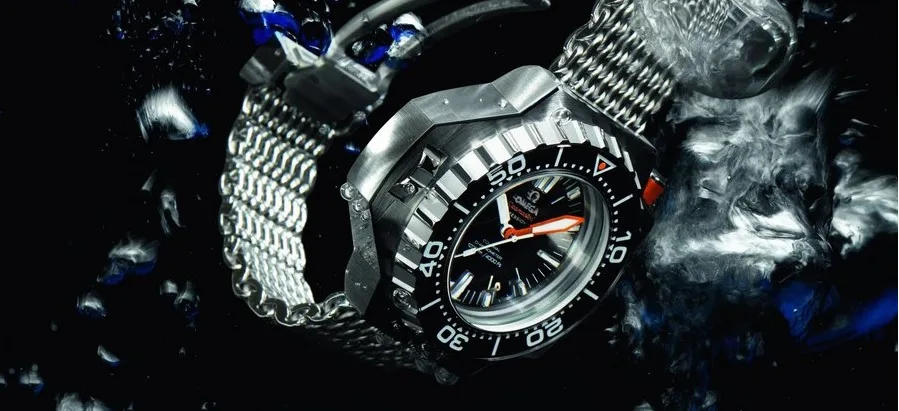By Jonathan Kopp
I often ask myself the question if it’s useful to have a diver’s watch which is 500m water resistant… So, a small point on the water resistance is required.
A watch rated as Water Resistant may come in contact with water to a predetermined extent. Most watches have a measurement until which the depth of immersion is safe. It is important to remember that a water-resistant rating is based upon optimum conditions in a laboratory. Real life experience & aging of the gaskets will effectively decrease the manufacturer’s specifications of water resistance over time. When water comes in contact with the movement, it is the worst scenario that can happen to a watch – thus I strongly suggest that you always work well within the parameters of the manufacturer’s recommendations and have your watch tested at least once a year. Any competent watchmaker has the necessary equipment to test water resistance.

Water resistance on a watch is obtained by 3 important factors
1. Case back:
Snap-on case backs are sealed by pressure and are considered the least water-resistant. The slightest nick in a case or deformity in a gasket (which will happen over time) will allow water to penetrate the case. Generally, these watches will have a water resistance of 30m/99ft maximum – which allows for contact with water but not immersion.
Case-backs attached with screws would be the second level of water resistance. Having the case back attached with screws allows for a much tighter seal than a snap-on case back, however a deformity in the gasket will still allow water to penetrate. Generally, these watches will have a water resistance of 100m/330ft maximum – which allows for light swimming & immersion in a pool.
Screw-in case backs are threaded and screws into the actual case. This creates a double seal, using both the threading & the gasket as a seal. Generally, (although not the rule) diving watches with water-resistant ratings greater than 100m/330ft will have this type of case back.
2. Crown:
The single most important factor to ensuring water resistance. This is the weakest link in a watch for water to penetrate is the crown-stem hole. The stem of the crown is attached to the movement through a hole in the case edge. As the crown is constantly moved to different positions, wound and turned to correct the time, the gasket is constantly compressed, chafed & stressed. The slightest variation in the shape of the gasket or if the crown is not pushed all the way in will allow water to penetrate the watch through the stem hole. Screw-down crowns are threaded & screw shut to a matching threaded tube in the case. The crown has a gasket that is compressed & seals the opening when the crown is tightened – thus ensuring water resistance. A screw-down crown is an essential feature for any watch you intend on swimming with. As matter of fact, we do not recommend swimming with a watch that does not have a screw-down crown. No matter if the watch has a screw-down crown & chronograph pushers, the crowns & pushers are never to be pushed, adjusted or opened when the watch is immersed in water – unless otherwise stated by the manufacturer. An additional benefit of the screw-down crown is that the crown is somewhat more protected from accidental knocks.
3. Gaskets:
“O” rings are made of rubber, nylon or Teflon which form watertight seals at the joints where the crystal, case back and crown meet the watch case. If the watch is a chronograph, the chronograph pushers will also have gaskets.
Gaskets begin to erode and break down over time, diminishing the water resistance of a watch. It is important to test you watch once a year for water resistance. Any competent watch maker should have the necessary basic equipment to test the watch – the cost involved should be minimal.
Real Life and Water Resistance
When a watch is tested by the manufacturer it is done in a laboratory under optimum conditions, such as a fresh gasket, sitting stationary in a pressured water tank and with still/motionless water. However, real life action will produce completely different results. Here are a few scenarios:
Water temperatures in a hot-tub or a hot shower will affect the shape of the gasket seals. Especially if the watch is taken from hot temperatures & immediately plunged into cold water – such as going from a hot-tub into a pool.
Sudden & rapid changes in pressure – such as diving (even shallow diving) into a pool, the force of plunging your arm into the water while swimming, will stress the gaskets for a fraction of a second. If the gaskets are not up to specification they may rupture and cause the watch to take in water.
As the watch ages the seals begin to erode & will not maintain the same water resistance levels.



